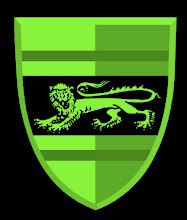
When creating a school magazine for my preliminary task, I had a completely different approach to the one taken in my main task. In the process of creating my school magazine, I was basing all elements on what i personally thought looked 'OK', not once did I take into account the desires of my audience, and I did little more than briefly look at other products in the same area.
When researching for my main product however, I realized that there is a lot to be learned from other magazines in the same genre, and that any successful magazine must cater for a specific target audience. This new approach to my work ensured that I created everything properly, following codes and conventions I had previously seen and knew to be successful.
In creating my main task, my magazine's image was more planned and more conventional than my school magazines image. When planning the picture for my main work I took into consideration everything I had learned, this approach contrasts heavily with the plan for my preliminary picture, which I just took with no previous thought or planning.
I also learned that when creating the layout for a magazine, you must again concentrate on what the audience want, and not simply fit everything in the space that seems to look best. You have to know the conventions, and follow them.
I learnt that when writing cover lines and a masthead, I must again, follow convention. If I was to redo my preliminary task now with all my newly learned skills, I would use different fonts, such as ones that resemble casual handwriting or the ones you find on school science equipment labels, in a hope to represent the content of the magazine, and its audience. I would not do what I did before learning about audience needs and representation, and just pick one that looked fairly good.

When editing images in my preliminary task, I didn't really understand what tools to use and where to use them, which resulted in a poorly cut picture that I then blurred and subsequently had to create a cover line to fit my new blurred image. This lack of planning need to improvise and work around mistakes was removed as I learned more about how the technologies I was using worked. In my main task I could cut and shape images exactly how I wanted them.
Another area where improvement can be credited to things I have learned is my contents page. My old contents page was extremely rushed and contained absolutely no planning. This cause the entire page to be quite poor in quality. This made me realize that leaving work so late would ensure failure, and so from then on I learned to manage my time better and work with more care, free from a fast approaching deadline.

Overall I think that my main product is much better designed due to advances in skill, more sensitive to genre, conventions, target audience needs and audience representation that my preliminary task was due to the things I had learned from progression between the two.





















